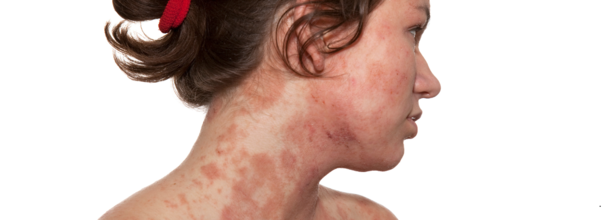- Health Conditions A-Z
- Health & Wellness
- Nutrition
- Fitness
- Health News
- Ayurveda
- Videos
- Medicine A-Z
- Parenting
- Web Stories
Rage Recedes After 50 In Women But Suppressed Anger Could Be Harming Your Health, Here's How

Credits: Freepik
For decades, menopause research has zeroed in on hot flashes, sleep disruption, and depression. But anger? Not so much. A new study is now filling that gap, offering one of the most comprehensive looks yet into how women experience anger across the menopause transition—and what researchers found is both unexpected and revealing. Turns out, anger actually begins to fade in midlife, particularly after age 50. The only catch? While outward expression of anger declines, many women still carry unspoken frustration below the surface.
Here's decoding the science of why this happens, what it means for women’s health, and how the emotional shifts during menopause could actually offer some psychological relief—if not resolution.
While menopause is typically framed through the lens of estrogen drops, sleep loss, and brain fog, its emotional dimensions—especially anger and irritability—remain underexplored.
This latest research, published in Menopause, the journal of The Menopause Society, set out to change that. Drawing on data from the Seattle Midlife Women’s Health Study, the study tracked over 500 women aged 35 to 55 through various stages of reproductive aging. The focus wasn’t just on mood, but on the texture of anger—how it surfaces, how it’s controlled, and how it evolves over time.
What researchers discovered was a dramatic shift- all types of anger, such as angry outbursts, reactive anger, and even passive hostility, decreased significantly with age but the type of anger that is kept inside called suppressed anger remained constant.
This is important because although less external anger may appear to be emotional maturity, holding in anger without ventilating it has consequences.
Link Between Aging and Emotion Regulation
What causes the decline in visible anger at midlife? A combination of hormonal shifts and emotional realignment. With changes in estrogen levels and eventual decline during perimenopause and menopause, many women experience mood swings and irritability. These shifts are well-documented. But what happens after the turbulence subsides?
The researchers found that women in their late reproductive and postmenopausal stages showed a stronger ability to regulate anger. One possible reason is the rewiring of emotional circuits in the brain as women age. With time and life experience, the prefrontal cortex responsible for executive function and emotional control may become more adept at managing reactive emotions like anger.
There's more to it than biology, social and psychological maturity also play a role. Women in midlife often report a greater sense of self-assuredness and less concern with others' opinions.
How Do Bottled-Up Emotions Affect Health?
Though anger outbursts and aggression will decrease, more of a worry is the chronic suppression of anger. Suppressed anger has been associated with all manner of physical and mental illness, including heart disease and depression.
Anger that simmers internally, without a release valve, keeps the body in a low-grade state of stress. It activates the sympathetic nervous system, raises cortisol levels, and contributes to systemic inflammation—an established risk factor for chronic disease.
Studies dating back to the 1980s have shown that women with high “trait anger” (the tendency to become angry easily) are more likely to experience elevated blood pressure and heart disease over time. More recent research found that higher anger scores were associated with thicker arterial walls—a sign of early atherosclerosis.
Emotionally, suppressed anger is a known contributor to depressive symptoms, especially during the menopause transition. Women undergoing hormone therapy may be particularly vulnerable, as hormone shifts can amplify emotional responses.
The mental health side of the menopause transition can have a significant effect on a woman’s personal and professional life. Fluctuations in hormone levels during this stage can result in severe mood swings associated with anger and hostility. Educating women about this reality is essential to improving quality of life.
Hostility—a persistent emotional readiness for conflict—differs from anger in that it’s more closely associated with anxiety and hypervigilance. Though it’s less outwardly visible, it takes a psychological toll and can affect relationships, work dynamics, and self-esteem.
Even if a woman isn’t visibly angry, she might still be carrying an emotional load that affects her health.
This study offers a rare glimpse into how anger matures—and softens—as women age. It not only validates what many women report anecdotally (feeling less reactive or combative as they enter their 50s and beyond) but also pushes the medical community to consider anger as a vital sign in midlife health.
Crucially, the study shows that age and reproductive stage are both significant. Anger doesn’t just fade because women get older. It seems to decline most notably after the late reproductive stage, suggesting that hormonal changes during menopause may directly influence emotional regulation.
What Does This Directly Affect Women Health?
Understanding that anger evolves during midlife can be empowering. It helps normalize a broad range of emotional experiences and encourages proactive approaches to mental well-being.
Here are some strategies experts recommend:
- Track your emotional patterns. If you're noticing less anger but more inner frustration, it might be time to explore outlets like therapy, journaling, or movement-based practices.
- Don’t ignore suppressed anger. Repression isn’t resolution. Bottled emotions can surface in other ways—anxiety, fatigue, chronic pain.
- Ask your doctor about emotional symptoms. Mental health during menopause is often sidelined in medical discussions. Bring it to the forefront.
We’re at a turning point in how menopause is discussed—not just as a medical event but as a profound emotional transition. Studies like this broaden the conversation and deepen our understanding of midlife psychology.
As women age, their emotional range doesn’t shrink. It evolves. Anger becomes quieter, more internalized, and perhaps more complex—but with the right awareness and support, it can also become more manageable.
A Common Medication That Leaves You Trapped 'In Your Own Half-Alive Corpse' Condition

Credits: Canva
Imagine applying a cream to soothe your itchy, irritated skin, only to later find yourself bedridden, burning from the inside out, with no end in sight. This is the haunting reality of Topical Steroid Withdrawal (TSW), a devastating condition that some people develop after stopping common steroid creams used to treat eczema and other skin conditions.
Topical corticosteroids are widely prescribed. They’re found in medicine cabinets around the world and are often recommended by doctors as a first line of defense against inflammation. But for some, particularly those who’ve used them for years, the consequences of withdrawal are nothing short of horrifying.
“Like Pouring Boiling Water Over My Skin”
Kelly Barta, reports The New York Post, was just 38 when she decided to stop using the topical steroid creams she had relied on since childhood. Diagnosed with eczema as a young girl, she began using hydrocortisone and gradually moved to stronger prescriptions as her condition worsened.
By adulthood, Barta was using one of the most potent steroid creams on the market.
“When I quit, it felt like someone poured boiling water over my whole body,” she recalled. Her entire body turned red and itchy. She couldn’t sleep. The burning sensation never stopped—for five long years.
Her life unraveled. She lost her job, her marriage, her hair, and nearly her life. “You’re imprisoned in this body with unrelenting pain,” she said. “Don’t try to get to tomorrow—just survive the next hour.”
Her case is not unique.
According to the International Topical Steroid Awareness Network (ITSAN), TSW can leave sufferers housebound or bedridden for months or years. Symptoms include extreme redness, relentless itching, nerve pain, and “oozing” skin. Many describe it as being “trapped in your own half-alive corpse.”
Misunderstood and Misdiagnosed
Though eczema affects around 31 million Americans, most are unaware of TSW. Doctors, too, often misdiagnose the condition as a worsening of eczema, and the standard recommendation is more steroids—further fueling the cycle.
“I was getting to the point where I’d reach into my purse and come out with hives,” Barta said. Her general practitioner dismissed her concerns, suggesting lifelong steroid use. But a pharmacy technician warned her she might be overusing the medication.
No one had ever explained that long-term use could make her skin thinner, more reactive, and vulnerable to new allergies. Barta’s own research revealed the disturbing truth—that what was supposed to help her had actually been harming her.
A Shared Battle
Jada Jones, now 23, tells the Post that she was also diagnosed with eczema as a child. When a dermatologist prescribed her mid-strength steroids, her skin improved quickly. Encouraged, she continued using them on and off—until high school stress triggered a flare-up.
Jones asked her doctor about TSW, but was reassured it wasn’t a risk. Instead, she was bumped up to the strongest Class 1 steroids.
Her condition worsened in 2022 while pursuing a creative career in Los Angeles. “It looked like purplish bruising. Not eczema,” she said. A scheduled photo shoot had to be abandoned midway. “I was bedridden from that day on for the next four months.”
Her body was on fire, her skin cracked, and pain consumed every waking moment. “They’re looking at you like you’re damn near a burn victim,” she said of her baffled doctors.
Healing in Unconventional Places
With traditional medicine offering little support, Jones took matters into her own hands. She moved to Tulum, Mexico, to try healing saltwater and later traveled to Thailand for Cold Atmospheric Plasma (CAP) therapy—a lesser-known treatment that has shown promise for TSW.
While she still battles symptoms, her condition has improved. Today, she manages her skin using infrared and red-light therapy.
“My skin has very mild eczema symptoms now,” she said. “I’d rather tolerate this for the rest of my life than ever go through that again.”
The Medical Mystery of TSW
Despite its severity, Topical Steroid Withdrawal Syndrome remains under-researched and poorly understood. There is no official diagnostic criteria, no universally accepted treatment, and many doctors still dispute its existence.
Patients are left to advocate for themselves, rely on online support groups, and explore alternative treatments. ITSAN continues to push for awareness and research funding.
Both Barta and Jones believe education is key. Steroids can help—but only if used sparingly and for short periods. “You think you’re getting help,” Barta said, “but then you end up 100 times worse than you were before.”
3 Foods That Can Increase Your Risk Of Life-Threatening Diseases - Even If You Have It Just Once A Day

(Credit-Canva)
One of the biggest causes of health concern, currently, is processed foods. As more people are becoming aware of the chemicals and artificial components present in their food, especially in over-the-counter food and packaged food. When a food article is called ‘processed’ it is because it has been altered in some way to ensure things like getting spoiled early or avoiding bacteria that could get entrapped while packaging.
While these processed foods go through certain changes to avoid health problems, consuming a lot of it over time could increase the risk of other health issues like cardiovascular health that appear much later. Many people live under the impression that as long as they simply eat less junk food, it will not affect their health. While part of it is true, another aspect of it is that it will still affect your health, but a little slower.
Increasing Risk of Life-Threatening Diseases
A new study published in Nature Medicine, suggests that even small amounts of processed meats, sugary drinks, and foods with trans fats can increase your risk of serious health problems. The research found that consuming less than a slice of bacon or a can of soda per day was linked to a higher chance of developing type 2 diabetes, colon cancer, or heart disease. While previous studies have hinted at the link between these foods and chronic illnesses, this new analysis specifically looked at how much is actually safe to consume.
Even Tiny Amounts Raise Disease Risk
Researchers reviewed over 60 different studies that explored the connection between these three food categories and a person's risk of type 2 diabetes, colorectal cancer, and ischemic heart disease (a type of heart disease). They consistently found that even very small amounts of these foods and drinks significantly increased the risk of chronic diseases. The more a person consumed, the higher their risk.
For example, eating as little as 0.6 grams of processed meat daily was linked to an 11% higher risk of type 2 diabetes. Consuming about one hot dog (50 grams) per day was associated with a 30% greater risk of type 2 diabetes and a 26% higher chance of colon cancer.
When it came to sugary drinks, having just a small amount (around 1.5 grams) up to a standard 12-ounce soda was linked to an 8% higher risk of type 2 diabetes and a slightly increased risk of heart disease. Even small amounts of trans fats, making up just 0.25% of daily calories, were associated with a 3% greater risk of heart disease.
Why Are These Foods So Harmful?
Scientists are still fully understanding why processed foods harm our health, but they have some theories. These items often cause inflammation and stress inside the body, which contribute to serious issues like diabetes and heart disease. It's likely a mix of different reasons that make these foods so problematic for our long-term well-being.
Meats and Sugary Drinks
Processed meats, like hot dogs, are high in unhealthy fats and salt, which can raise cholesterol and blood pressure. The way they're made can also create harmful substances, increasing cancer risk. Sugary drinks contribute to weight gain and obesity, major heart disease factors. Liquid calories don't make you feel full, leading to overconsumption and potential gut issues.
Trans Fatty Acids
Trans fats, found in many baked goods and snacks, are especially harmful. They raise "bad" cholesterol while lowering "good" cholesterol. This unhealthy combination significantly increases your risk of heart disease. These hidden fats are designed to improve taste and texture, but their impact on your cardiovascular health can be quite severe.
Choose Healthier Options
To lower the risks from eating processed foods, try to eat a healthy diet most of the time. Pick fruits, vegetables, whole grains, chicken, fish, and nuts instead of processed meats and snacks. For drinks, choose water with lemon or sparkling water instead of sugary sodas or sweetened coffee. You'll find that if you cut back on sugar over time, you'll actually crave it less.
Heart Attacks And Strokes Can Now Be Predicted 10 Years Before They Happen, Through This AI Test

(Credit-Canva)
Cardiovascular health is one of the leading causes of deaths all over the world. The Centers of Disease Control and Prevention states that every 34 seconds a person dies from cardiovascular disease (CVDs). Statistics show 919,032 deaths due to CVDs in the US in 2023. Globally the number is even bigger, hence why people are advised to take better care of their health, whether it is in terms of food, exercise or mental health.
A big reason why we have been able to proactively avoid heart issues is because of the advancement in medicine through tests and research. These findings have helped us stay healthy and avoid issues in the future. Another such aid has been made through a recent study, which could predict heart events years before it even happens.
A recent study done by the British Heart Foundation, suggest that a quick eye test, taking less than a minute, might be able to predict your risk of having a heart attack or stroke in the next ten years. Scientists have developed an advanced computer system that analyzes digital pictures of the back of your eye. This technology can quickly provide a personalized assessment of your risk. The hope is that this simple and easy test could become a regular part of health check-ups, just like measuring blood pressure or cholesterol, helping doctors spot potential problems as early as possible.
Peering into the Eye's Blood Vessels
This new technology uses the idea that the tiny blood vessels in your eyes can give important clues about the health of blood vessels throughout your entire body. This includes the ones that supply your heart and brain. It might seem surprising, but specialists say that your eyes are like a "window to your heart." If there's any damage or narrowing in the blood vessels at the back of your eye, it's likely that similar issues are happening in the blood vessels deeper inside your body, which could eventually lead to a heart attack or stroke.
Learning from Diabetic Eye Scans
Researchers taught this advanced computer system using eye scans from people who have type 2 diabetes. These individuals regularly have their eyes checked for a condition called diabetic retinopathy, where high blood sugar can harm the blood vessels in the retina. The system was first taught to recognize potential warning signs in these images, such as narrowed or blocked blood vessels. Then, it was allowed to examine every tiny detail within the pictures, including the size or shape of blood vessels, and was trained using a large collection of over 4,000 images.
Accurately Predicting Cardiovascular Events
The AI technology was quite successful in predicting which individuals would experience serious heart problems, like heart attacks or strokes, within a decade. It was accurate about 70% of the time. Experts point out that this is a single, quick scan that is already done routinely and takes less than a minute. They believe it could become a very important part of overall health checks, alongside blood pressure and cholesterol tests, to help identify people who could benefit from medications or changes to their lifestyle.
Game-Changer for Heart Health
Leaders in the field emphasize that the more precisely we can figure out someone's risk of a heart attack or stroke, the better we can prevent these events from happening. They see innovative advancements like using eye scans alongside other health checks as a key way to improve how we predict risk. This is very important if we want to reach the goal of preventing a significant number of heart attacks and strokes in the future.
Experts also suggest that such advances could make it much easier for people at risk of stroke to take the necessary steps to prevent it. While there are still many practical questions about how and when this AI could be used in regular medical care, there's hope that future health plans will consider these technological advancements to save more lives.
© 2024 Bennett, Coleman & Company Limited

